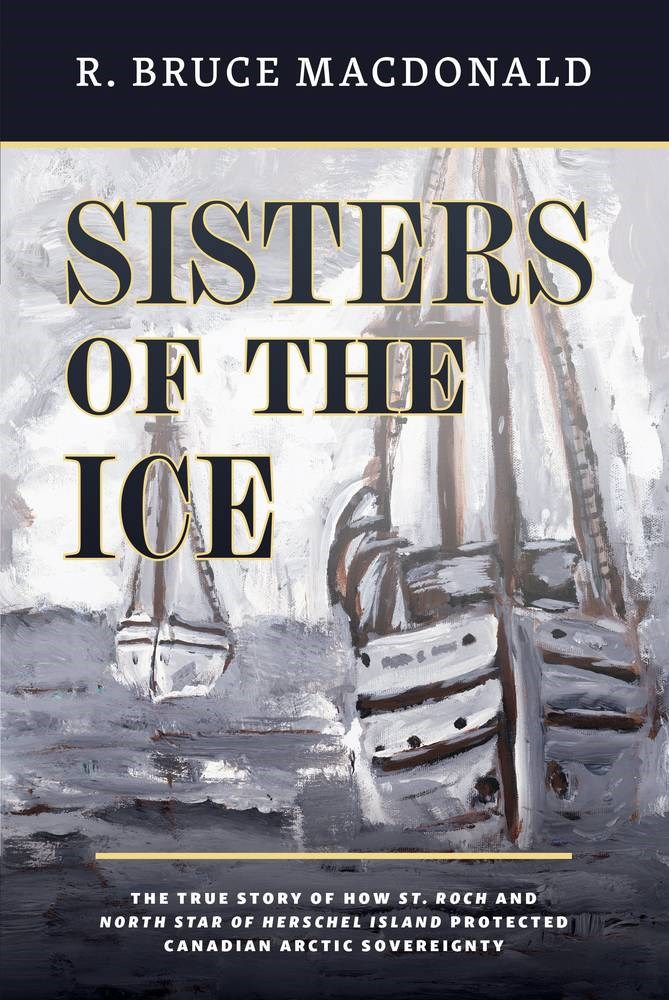Sisters of the Ice: The True Story of how St. Roch and North Star of Herschel Island Protected Canadian Arctic Sovereignty by R. Bruce Macdonald; Lost Moose, 160 pages, $19.95
St. Roch is one of the most famous names in Canadian history; her service in the Arctic, including traversing the Northwest Passage both ways, has made her a legend. The former RCMP vessel has a permanent home in the Vancouver Maritime Museum.
North Star of Herschel Island is not as well known, but she certainly should be. Her Arctic service was just as remarkable, and she is still sailing today.
This book by R. Bruce Macdonald, a historian who has owned North Star for a quarter of a century, provides a comprehensive history of both vessels, drawing information from the service logs of both vessels.
St. Roch, under the command of Capt. Henry Larsen, was used to enforce the law in the far north, along with more mundane duties such as the delivery of medical supplies. The RCMP role is not why the vessel earned its legendary status — that came because of St. Roch’s many firsts.
In 1940-42 she became the first vessel to travel the Northwest Passage from west to east. In 1944 she sailed from Halifax and, using the northern route through the passage, became the first vessel to go through the passage both ways and the first to go either way in a single season.
In 1950, after two years at Esquimalt, St. Roch sailed south, and went through the Panama Canal on her way back to Halifax. When she reached that port, she had become the first vessel to circumnavigate North America.
St. Roch was, to be kind, not the nicest vessel to sail the seas. She was cramped, so the five-week maiden voyage from Vancouver to the high Arctic in 1928 was a dreadful experience for the RCMP officers on board. (As Macdonald notes, real sailors would not have put up with the uncomfortable conditions on board St. Roch, but the police officers did not know any better.)
The spartan quarters were not the biggest problem. Designed for surviving encounters with heavy ice, St. Roch had a round hull, and combined with the tall masts, the vessel had a wicked roll when the seas were less than ideal.
Still, St. Roch was the inspiration for North Star, which was used to transport people, furs and supplies between Banks Island and the mainland for many years.
North Star was built in San Francisco and taken to the north on another ship, Patterson. She was launched in the summer of 1935 and remained in service at Banks Island until 1961. In later years she was anchored at Victoria, a visible monument to our maritime heritage.
Together, St. Roch and North Star helped establish Canada’s role in the far north, at a time when boundaries were still in dispute. They staked a claim, in simple terms, for Canada.
Macdonald’s book is a well-researched labour of love, one that will enhance our knowledge of Canada’s maritime history as well as the history of the north.
Sisters of the Ice is more than just a history of two boats. Macdonald introduces us to prominent people and pivotal places, which helps to put the roles played by St. Roch and North Star into proper context.
A few quibbles: There could have been more references to dates to help the reader keep track; there could have been more, and better maps; ideally, the photos could have been larger. (Consider the last point a wish rather than criticism, because when it comes to compiling history books, we sometimes have limited choices.)
A book such as Sisters of the Ice can be inspiring, in many ways.
It can inspire us to visit the maritime museum in Vancouver, once we are finally allowed to travel again. And since it is a strong reminder of our maritime history, it might help to inspire us to push for a suitable home for the Maritime Museum of British Columbia, here in Victoria.
The reviewer, the publisher of the Times Colonist, is the author of several books on local history.



